
“Not necessarily because we wanted to be offbeat in the beginning, but because we were so off the beaten track in the New York City studio scene at the time,” Blank said in 2009, “the only people who would walk through our door were the people who couldn’t get uptown into the big studios.” The studio earned a reputation among listeners. In the Village Voice in 2010, writer Andy Beta wrote, “The label credit ‘Recorded at Blank Tapes’ triggers the same reverence that ‘Van Gelder Studio’ inspires in jazz heads or ‘Fame Recording Studio in Muscle Shoals’ suggests to soul aficionados — a sure sign that whoever the artist and whatever the cut, it’s worth a listen.”
I first noticed the Blank Tape name on the first album by Kid Creole and the Coconuts. One of the ’80s bands that changed my life back when I was a Long Island University student playing obscure jams on the Brooklyn campus’s radio station, their music was masterful, precise, and always surprising. Led by a zoot suit–wearing singer August Darnell (born Thomas Darnell Browder), I couldn’t get enough of their funky calypso soul, and I frequented their masterful live shows at the Ritz and Carnegie Hall.
However, it was their third album Wise Guy (aka Tropical Gangsters) that pulled me deeper into the Cult of Creole. The singles included the boastful swagger of “I’m a Wonderful Thing Baby,” the cool outlaw boogie of “Stool Pigeon,” and the bouncy beat laced with shady sentiments of “Annie I’m Not Your Daddy.” More soulful pop than previous efforts, Wise Guy became their most successful record, though Darnell has claimed it was a compromise with his then label Ze Records.
Kid Creole and the Coconuts began as an offshoot of the disco group Dr. Buzzard’s Original Savannah Band, known primarily for its hit “Cherchez la Femme.” The group was nominated for a Grammy nominated in 1976. With its Jay Gatsby champagne attitude, that single also immortalized the band’s manager Tommy Mottola. “Hearing my name in ‘Cherchez la Femme’ five times a day on the radio was so strange — almost surreal,” Mottola explained in his autobiography Hitmaker. “At that age [27] and at that time it became very intoxicating, even dangerous, and I was only their manager.” Years before singer Michael Bublé could read Sinatra’s sheet music, Dr. Buzzard’s crew wasn’t simply reinterpreting the Great American Songbook, they were also contributing to the canon by combining disco with a brassy big band sound. The band also consisted of curvy chanteuse Cory Daye and Darnell’s older brother Stony Browder Jr., who was the group’s leader and main songwriter. Darnell played bass and penned the songs’ words. “The lyrics have bite, real wit,” critic Nik Cohn wrote in November 1976. However, three years later, as the group began to falter, various members mutinied and soon became sonic forces on their own musical merits.
Their music was masterful, precise, and always surprising.
In between breaking from Dr. Buzzard and the formation of his next big thing, Darnell honed his production chops on a few projects. “I had no formal training as a producer,” Darnell explained to me recently from Sweden, one of the three places he now lives. “I learned my skills by just watching other producers. Instead of leaving the studio after I had fulfilled my duties on the first Savannah Band album, I would hang around and watch Sandy Linzer do his thing. When my brother produced the subsequent Savannah Band albums, I would linger in the studio to observe and absorb his skills.”
With a production deal from RCA, which was also Dr. Buzzard’s label, Darnell wrote and produced a song for the band Machine that became a disco classic. “There But For the Grace of God Go I” was an infectious jam that provided the soundtrack for hustle competitions for years to come. The edgy track combined rock and disco perfectly, with its relentless beat and frenzied guitars. In 2008 it was included in “The Pitchfork 500: Our Guide to the Greatest Songs from Punk to the Present.”
“My business manager, Bert Padell, recommended me to the manager of Machine, who was looking for a producer,” Darnell said. “I met the guys. They were young, talented, and crazy. My kind of people. The keyboard player, Kevin Nance, presented me with a mighty track that needed lyric and melody. I loved the groove. Nance and I had no idea that this song would become so iconic.”
Darnell was still working with manager Tommy Mottola, who years later would become chairman and CEO of Sony Music, where he was instrumental in the careers of Gloria Estefan, his future wife Mariah Carey, and Beyoncé, and where he eventually sullied his reputation by emotionally abusing Carey. “What a character,” Darnell said of Mottola. “We clicked immediately. He too was from the Bronx. We had a lot in common. He was a great manager. Stony grew to dislike him for one reason or another; I cannot remember why. But that’s a lot of water under the bridge. Tommy lived music. The passion was evident, that’s why we got along.”
Dr. Buzzard’s drummer Mickey Sevilla introduced Darnell to Bob Blank of Blank Tape Studios. Darnell previously worked on songs in a small demo studio owned by music publisher Warner Chappell, but when they dropped him by 1979, the 24-track Blank Tape Studios became his new home. “The powers that be at Chappell lost faith in me after a year because they could not understand why all my songs had a reggae or calypso groove,” Darnell recalled. “I was told repeatedly, ‘That’s not commercial!’ I admired Bob because he was a brave soul who did not care about sonic rules and regulations. He would give me free time to record during what is called the graveyard shift — late late hours when the studio was not booked by ‘real’ clients. My fondest memory of Bob is when he used to fall asleep behind the console while I spent hour after hour searching for a bass drum sound.”
Darnell was struggling personally, but he refused scale back his musical ambitions. “August was very talented, but he would book all-night sessions, because he had no place to live,” Blank told writer Bill Brewster in 2006. “So he could work all night and then sleep somewhere at somebody’s apartment. I didn’t know that at the time, but found out later.” Recently Blank, who was also a guitarist, producer, and engineer, spoke with me via telephone from his Connecticut home. “The first thing I realized about August in the studio was the guy was a real genius,” he said. “He was smart, played all sorts of instruments and was a wonderful writer.”
The studio owner introduced Darnell to Michael Zilkha, an English businessman and heir of the U.K. retail chain Mothercare who, before cofounding the eclectic and soon-to-be-hot Ze Records with Michel Esteban in 1978, had briefly freelanced for the Village Voice, writing theater criticism. “I was intrigued by August when we first met,” Zilkha said over the phone from his home in Houston, Texas. “I was in the studio working with James Chance, and August was so articulate, funny, and clever. He was an intellectual and we shared the same sense of irony, but he also didn’t take anything too seriously.”
‘I had no formal training as a producer. I learned my skills by just watching other producers.’
Zilkha was in the process of working with Velvet Underground bassist John Cale to produce the dance single “Disco Clone” for his future wife Cristina, but the sessions were going badly. While Cale had produced masterful projects for women including Nico and Patti Smith, he was out of his element with Cristina. “John was pretty cool, but he was not comfortable in that world,” Blank says. “In the end, August played bass on the track and mixed it.” He also produced Cristina’s self-titled album released in 1980. Impressed by Darnell’s musical moxie, Zilkha signed him to Ze Records, hiring him as in-house producer and forming an alliance that would last for the next four years.
“I’m always attracted to bass players, because I think it’s the most important instrument in terms of making records,” Zilkha said. “Bass players always had the best sense of what was happening.” Darnell contributed to Ze’s “mutant disco” sound that combined punk and dance, and that could be heard in the music of James Chance, Aural Exciters, Material featuring Nona Hendryx, Was (Not Was), and the Waitresses. “The Ze Records roster, what a cast,” Darnell said. “We were all members of one super-talented, dysfunctional family.”
One of Darnell’s first projects was remixing James White & The Blacks’ single “Contort Yourself.” “James loved the Machine single,” Zilkha said. “So he was thrilled that August was doing the remix.” In addition, the demos that Warner Chappell Publishing rejected were brought to Blank Tape, where Darnell reworked them into Kid Creole and the Coconuts’ debut Off the Coast of Me.
Inspired by the Elvis flick King Creole, the Kid Creole name was a suave pseudonym within a pseudonym. Darnell’s friend and collaborator Vivien Goldman described him in the Guardian as “an experienced juggler of self-created personas.” The Kid character was a musical trickster who could charm your woman with his poetics and promises while stealing the milk out of your coffee. He was a traveling man looking for fun and adventures before his boat set out to sea. Off the Coast of Me drew heavily on tropical music influences. The album included standout tracks including the erectile dysfunction anthem “Mr. Softee,” the sunny mid-tempoed “Yolanda,” and the title track’s lo-fi jungle jive.
British journalist Paul Lester wrote in the Guardian that “the LP was greeted like the second coming by a U.K. music press weary of dour post-punk.” “It was reviewed like Sgt. Pepper,” Darnell told Lester in 2011. Unfortunately, little of that positive press translated into sales. Still, if nothing else, the album proved to the world that Darnell not only had what it took to do his own thing, but that he was also developing into a hell of a production wiz. “Meeting Michael Zilkha afforded me the opportunity to put this knowledge into action,” Darnell said.
Another key member of Kid Creole was sidekick and arranger Andy Hernandez. Giving himself the stage name Coati Mundi, after a playful Latin American ring-tailed mammal, he was the band’s musical director and comic foil onstage, what Andy Schwartz, the former owner and editor of New York Rocker, called the “group’s secret weapon. You can never discount the influence and excitement generated at a show by a person like that.”
An important but usually unsung element of the group was Darnell’s taskmaster wife Adriana Kaegi, a Swiss-born musician who was in charge of the Coconuts side of things. More than simple background singers, the Coconuts were inspired by ’50s girl groups, but with the attitude of punk women. They not only supplied the oohhs and aahhs, but also served as a blond-haired Greek chorus that had no problem putting macho man Creole in his place. Darnell and Coati held auditions in a rehearsal studio named Daily Planet in Manhattan. “We needed versatile musicians,” Darnell said, “including a horn section, who could play all styles — pop, R&B, funk, jazz, salsa and calypso. It wasn’t easy.” What made it harder was the fact that they were broke, with Coati moving in with his sister.
‘I was told repeatedly, “That’s not commercial!”‘
Living Colour guitarist Vernon Reid, who met Darnell back when they were both rising stars, said, “They were uptown boys with downtown leanings. August was snarky, smart, funny, and weird. I saw them play at the Mudd Club, and later I worked with Coati for a Carlos Santana tribute. The ’80s were a very vibrant time in the life of the city, and in those early years I was playing with avant-funk guys Defunkt. Kid Creole was a part of that scene as well. August’s lyrics always had a tongue in cheek.”
Around that same time, the writer Glenn O’Brien began writing and filming Downtown 81, which starred Jean-Michel Basquiat. Hobbled by financial uncertainties, the film sat in the archives for nearly two decades and was destined for obscurity until Zilkha invested in the flick in the late 1990s, and ultimately released it in 2000 — after all, the score featured a few Ze artists, including Kid Creole and James Chance, along with other scenesters like Fab Five Freddy, Debbie Harry, and Vincent Gallo.
* * *
The majority of Kid Creole’s albums on Ze were connected by a loose fictional narrative about the quest for his lost girlfriend Mimi. Off the Coast of Me laid the foundation for their self-labeled “mulatto music.” In July/August 1980, New York Rocker featured a story written by Peter Holsapple from the band the dB’s. “Afterhours, the dB’s used our offices as rehearsal space,” remembered Rocker editor Andy Schwartz. “So I saw Peter all the time. He was really fired up to write about Kid Creole, and he could write. We put them on the cover [of the July/August 1982 issue], because they were the most happening thing in New York. We didn’t do market research, we just followed the collective buzz of our staff and contributors.”
In 1981, they released their second album, Fresh Fruit in Foreign Places, a disc New York Times music critic Robert Palmer defined as a “cultural goulash” in the June 10, 1981, installment of his column “The Pop Life.” In the same piece, Palmer described Fresh Fruit as an “extraordinary album,” but one that Coati Mundi was quoted as saying was “too black and/or Latin for white rock stations, but does not fit into the formats of most black pop and disco stations, either.”
Still, for August Darnell, who had already tasted the luxury life as part of the Savannah Band, failure wasn’t an option. Kid Creole and the Coconuts had a lot to prove, and he held onto the dream of being respected as a genuine artist, composer, and showman. He had come too far to return to the Bronx a broken man.
* * *
“Dream music, that’s what Stony used to call the music Dr. Buzzard’s Original Savannah Band did,” said cultural critic Carol Cooper, who wrote extensively about the brothers in the 1980s for the Village Voice. “And that’s how I felt about it. Andy’s vibes and Cory’s vocals took you into another dimension. It was a perfect parallel universe where every man was Duke Ellington, and every woman was Connee Boswell or Valaida Snow.”
Dr. Buzzard’s songs “I’ll Play the Fool,” “Hard Times,” and “Sunshower” were like the Gershwin brothers meet Lennon and McCartney in the age of disco as they created nostalgia for an era that they hadn’t lived through. The album has retained its timeless quality, ensuring a long life that includes Ghostface Killah sampling “Cherchez la Femme” on “Cherchez La Ghost” from Supreme Clientele, while M.I.A. appropriated “Sunshower” on “Sunshowers,” and Queen Latifah covered “Hard Times” on The Dana Owens Album.
Browder and Darnell were two mixed-race Bronx boys who grew up on Bryant Avenue and Bruckner Blvd in the ’50s and ’60s. They came of age during the doo-wop, James Brown, girl groups, and Motown eras. Mixed in an era when being called mulatto was acceptable, they were the sons of a French Canadian mother and a Dominican father living in a racially diverse neighborhood that was a melting pot of cultures. In popular culture, such as Douglas Sirk’s melodrama Imitation of Life, being biracial was usually considered shameful or tragic. However, countering that completely, the Browder boys embraced miscegenation and made it a part of their art.
‘August was very talented, but he would book all-night sessions, because he had no place to live.’
“I spent a whole lot of time in Pelham Bay Park with my brother and our girlfriends,” Darnell explained. “I attended P.S. 66, Junior High 123, and James Monroe High, but I never set foot inside Yankee Stadium,” he said. “The Bronx was a great place to grow up in as a youngster, and a great place to leave as an adult.” The Bronx could be rough, but the brothers’ diamond life imagination of a better tomorrow always soared high above the rooftops of their hood. The first band they were in called themselves the Strangers, a group which Darnell told Glenn O’Brien in 1980 was influenced by the Beatles and Elvis: “Four cats, we used to dress in dark shades.”
After high school, he enrolled at the State University of New York at Stony Brook, on Long Island, where he was initially a drama major, but switched to English in an effort to avoid Vietnam. “A friend suggested that drama majors were not taken seriously by the Draft Board,” he said. Citing Shakespeare, Langston Hughes, F. Scott Fitzgerald, and Richard Wright among his favorite writers, Darnell thought about becoming a playwright, and he later worked with Joseph Papp to develop a few ill-fated projects that would have been staged at New York’s famed Public Theater. However, before all of that, he taught at Hempstead Middle School in Long Island for three years.
Retired teacher Michael Cohen, who also taught at the school, remembers Darnell well. “It was 1972, and he was still going by the name Tom Browder,” Cohen told me. “The same way he dresses as Kid Creole, those were the same kind of clothes he wore to school. He dressed like Cab Calloway every day — the hat, the zoot suit, the two-toned shoes. He was a real character, but the kids loved him. A few years ago I went to see him perform at Westbury Music Fair. I snuck backstage afterwards, and he looked the same. The man is ageless.”
Darnell enjoyed teaching, but when Browder told him that Dr. Buzzard was ready to fly, he quit his job and never looked back. Once the brothers recruited Mundi, the musical clique was complete. A Spanish Harlem native, the five-foot-two Mundi told writer Ruth Jacobs in 2014, “I met one of the original members [of Dr. Buzzard] in the waiting room of a massage parlor located in the former Commodore Hotel in Grand Central area of NYC. We got to talking politics and he invited me to audition for the band providing I pick up his tab. Next thing I knew, I was shaking my knees and wearing old clothes formerly owned by dead people.”

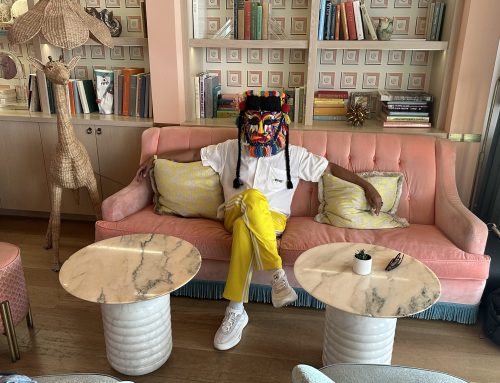
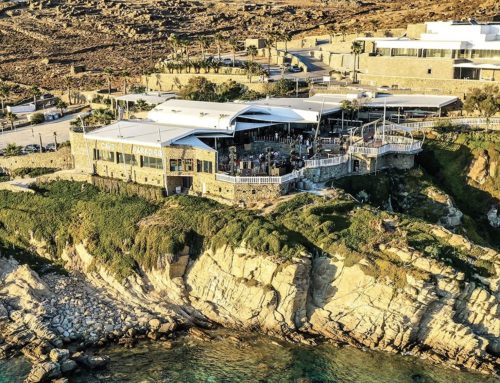
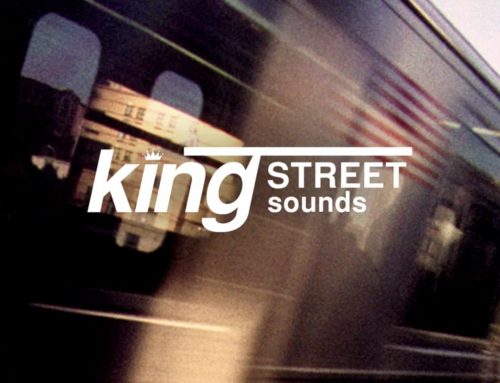
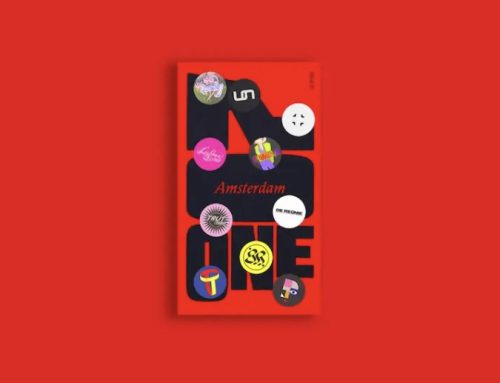
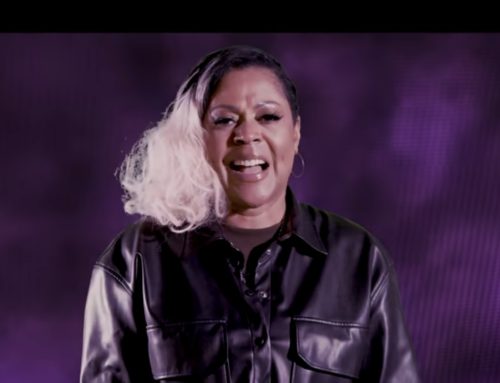
Leave A Comment
You must be logged in to post a comment.